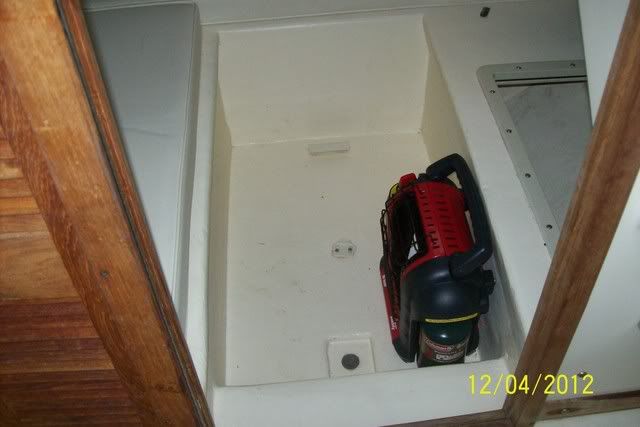MadGar":2css3ofe said:
I use one all the time right up until the season ends 12/31. I followed as HOTPURSUIT suggested and mounted down below n the cuddy area. The heat rises right into the cabin and keeps you toasty. I never had a problem with it kicking off but then again I primarily use it trolling where we are not cruising through the waves. Doesn't appear to be near as sensitive as other ones I have used.....
Well, I bought one of these great little heaters, and let me just say, while on the lower of the 2 settings (4000 btu), I had to keep 2 side windows halfway open, although not seriously cold out when tested. I got 4-1/2 hours of continuous use out of a single 1-lb bottle. However, while underway I could not seem to keep it from tripping the "tip-over" feature and shutting down from just the "jolting" of some waves. Seems it can not differentiate a true tip-over condition from a jolt. Although that is a really good feature for a portable heater, like others, I have permanently mounted mine so it's no longer a portable heater, and no possibility of tipping over. My gas furnace in my basement is bolted down, and that unit does not have a tip-over sensor. While bolted down, if this heater in my boat tips over, then the entire boat is tipped over, and I've got bigger worries than a heater.
Since it is important to keep the heater going while underway, especially after having a lowered core temperature from diving, I decided to bypass this inferior motion sensor. Motion sensor is a better term for this feature, as it will trip with any sudden abrupt motion, even while in the upright orientation. Since I can visually see the heater glowing a few feet from me while at the helm, it is really not operated unattended anyway.
Below are some pics of the mercury switch inside the heater. When it trips, sloshing liquid mercury inside the sensor simply interrupts the millivolt source of voltage being generated from the pilot-light thermocouple. Some other manufacturers of portable heaters, use a heavy steel marble that rests on a sensitive switch as their motion sensor. This mechanism also can't differentiate in which axis the motion being exerted.
If anyone is considering such a similar use of a this heater, but may still want to use it in the "portable" mode, removing the mercury sensor is not a good idea. However, a compromise for when repeated shut-downs can't be tolerated, and only when strictly supervised, would be simply adding a low-profile handle,slide, lever, etc., miniature switch to the spaciously hollow, cool and empty heater enclosure. This switch would merely "jump/short" both wires on each side of the sensor. This would prevent the switch from briefly opening the thermocouple circuit due to a jolt, and could be switched back to normal function, with tip-over protection. A simple key switch (from (Radio Shack) may even be a good choice of switch. These heaters also come equipped with a low oxygen safety feature. This is in no way affected by wave motion, and is in no way connected to this modification, so is left intact and fully functional.
I will attach 3 pics to follow, of where this sensor is located, and what to remove. There are 6 screws (3 on each side), of the heater case but there is no need to remove them all. The rear metal half is all that needs to be accessed. This arched metal hinges off from the top, under the handle.
Other than this overly sensitive & flawed safety device, this heater is perfect for a pilot house. Unfortunately, we need heat while underway just as much as the car owner who insists on operating the car's heater while in motion.












